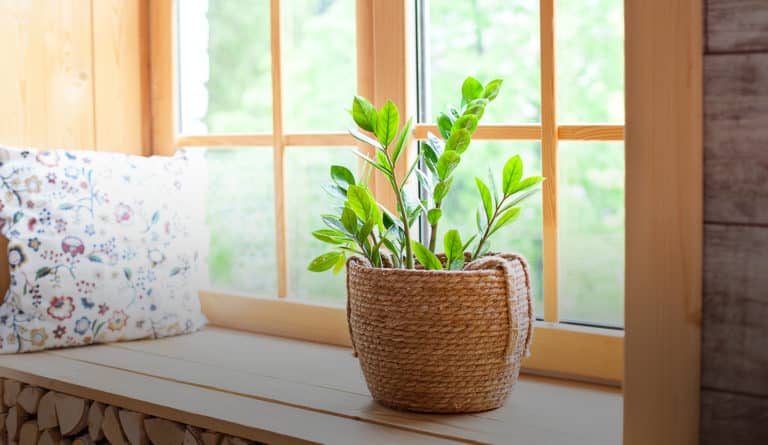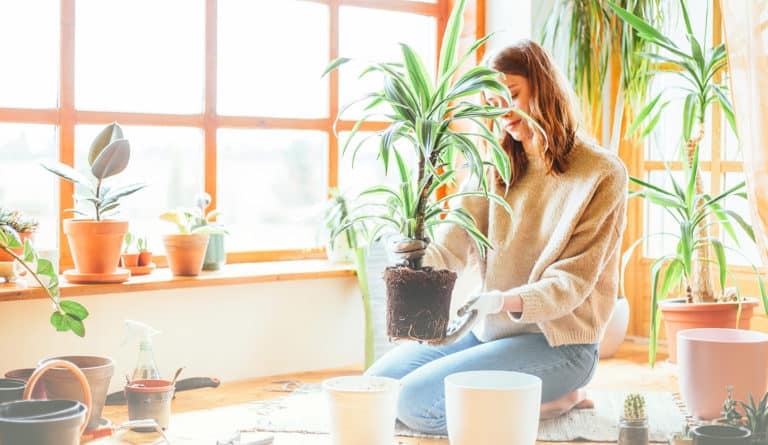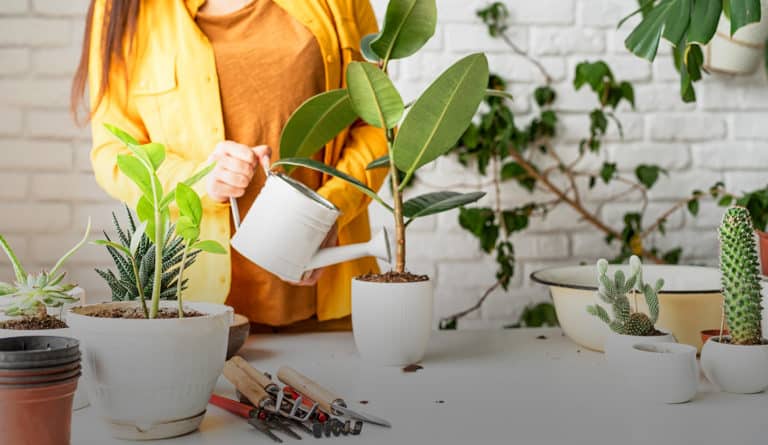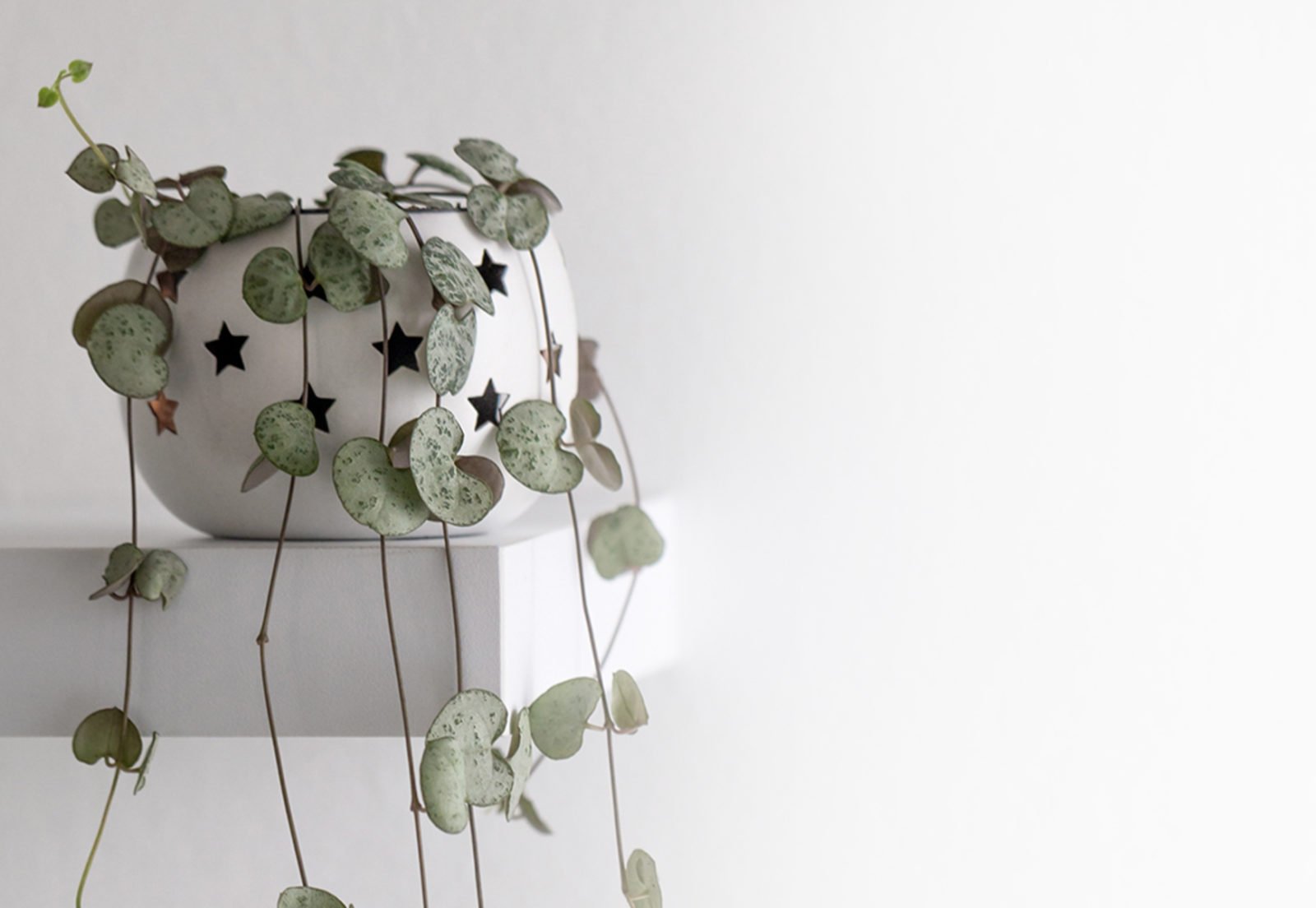
string of hearts
aka ceropegia woodii
this beautiful trailing succulent is native to South Africa, Swaziland and Zimbabwe. This plant is named for the sweet, heart-shaped leaves.
variations
the more sun it gets, the more variegated the leaves will get. Leaves can get silver, cream or even pink markings.
light
bright, indirect.
Ample bright, indirect light will lead to greater variegation in the leaves.
water + feeding
somewhat thirsty
Can be watered 1-2 times a week in the spring and summer, once every week or two during the fall and winter.
toxic
no
This plant is safe for pets.
location
somewhere bright
Place near your brightest window. South or West facing windows is recommended
humidity
not too fussy
Can tolerate drier climate but thrive in about 40-50% humidity.
size
small-ish
Can grow up to 3 inches tall and have trailing stems that can grow to 3 – 9 ft long.
pro tip
sun baths
Colour can be revived by placing your plant by a bright window. Leaves can return to their vibrant colours and even turn pink.
fun fact
fast Growers
They’re fast growers and very easy to care for, making them popular houseplants for beginners.
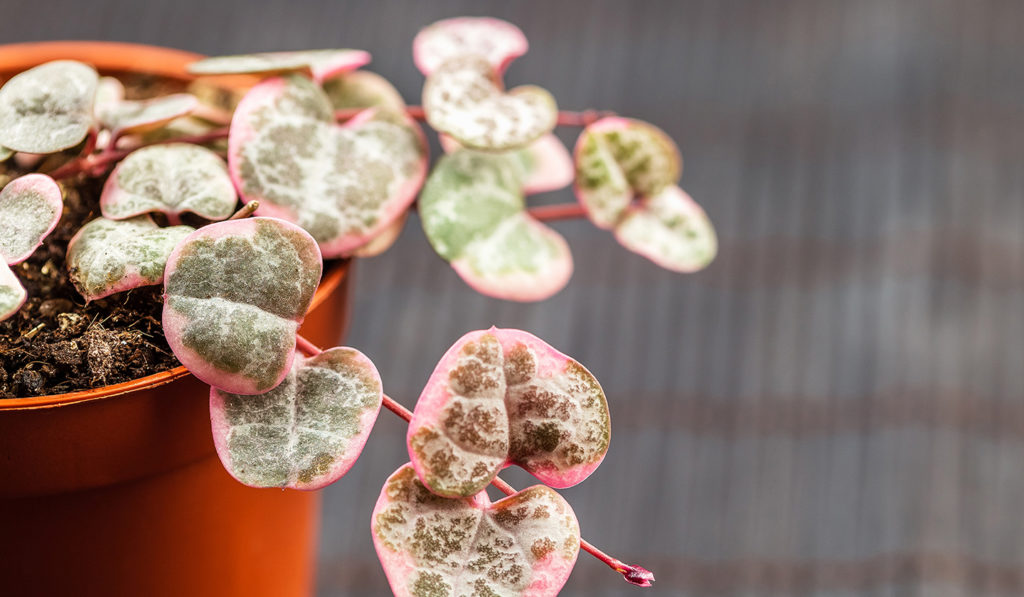
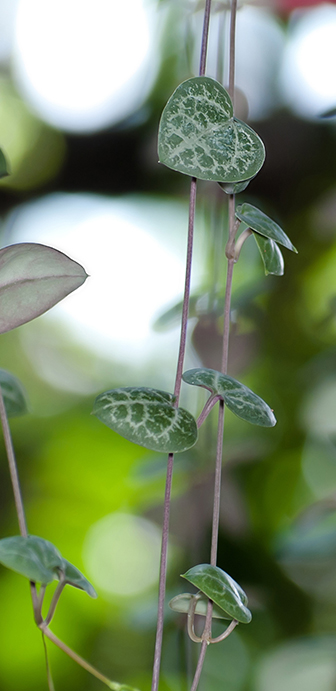
beyond the basics
-
soil + potting
String of heart plants are a member of the succulent family, so they need a porous, well-draining potting mix that doesn’t retain a lot of moisture because these beauties are prone to root rot. It’s recommended to use a succulent specific potting mix, like Miracle-Gro® Cactus, Palm & Succulent Potting Mix.
-
when to repot
String of hearts tend to be okay with staying slightly rootbound, so you don’t need to keep a strict schedule when repotting. A good rule of thumb is to repot about every 1 – 2 years. Use a pot that is a few inches bigger than its current pot and has a drainage hole.
-
propagation
Start by trimming your string of hearts just under a nodule. Place your cutting in moist soil and watch your new plant take root. This process will likely take about a month. Make sure the soil is kept moist during this growing period.
-
pest control
String of hearts are prone to root rot, so make sure your plant’s soil is drying out between watering. Other pests like aphids or mealybugs can be managed by using an insecticidal soap such as Ortho® Bug B Gon® ECO Insecticidal Soap.
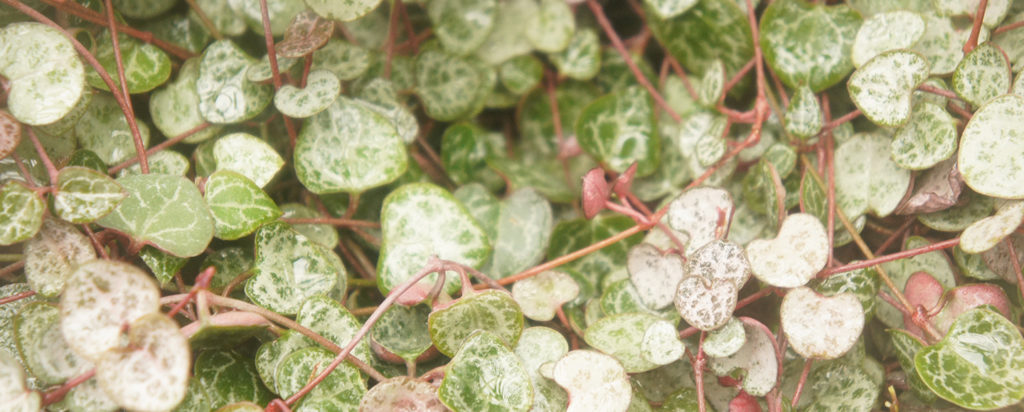
troubleshooting
-
why are there big gaps between my leaves?
Not enough light. Move your string of hearts to a place where it can sit in ample indirect, bright light.
-
why are my leaves turning mushy and droopy?
Overwatering or root rot. Root rot is caused by overwatering. The easiest way to tell if it’s root rot or just overwatering is to give it a sniff. If your plant smells bad, it’s root rot. If it smells okay, just hold off on watering it for a little the soil dries out a bit.
-
why are my leaves turning brown?
Sunburn. It looks like your string of hearts is getting too much sun. These plants enjoy bright, but indirect light. Move your plant away from direct sunlight, but keep in a nice, bright room.
-
why are my plant’s leaves curling?
Underwatering. Thinning or curling leaves is a clear indicator of underwatering. Give your string of hearts a good soak and your plant should be happily re-hydrated.

